
138
HNUE JOURNAL OF SCIENCE
Natural Sciences 2024, Volume 69, Issue 3, pp. 138-147
This paper is available online at http://hnuejs.edu.vn/ns
DOI: 10.18173/2354-1059.2024-0043
INVESTIGATION OF THE EVOLUTION OF SABATH GENE FAMILY
IN CASSAVA (Manihot esculenta) REVEALS ITS POTENTIAL ROLE
IN GROWTH AND DEVELOPMENT
Tong Van Hai1, Luu Thi Bao Ngoc1, Nguyen Quoc Trung1, Dong Huy Gioi1, Chu Duc Ha2,
Tran Van Tien3, La Viet Hong4, Le Thi Ngoc Quynh5 and Tran Thi Thanh Huyen6,*
1Faculty of Biotechnology, Vietnam National University of Agriculture, Hanoi city, Vietnam
2Faculty of Agricultural Technology, University of Engineering and Technology,
Hanoi city, Vietnam
3Faculty of Rural Management, National Academy of Public Administration, Hanoi city, Vietnam
4Institute of Scientific Research and Application, Hanoi Pedagogical University 2,
Vinh Phuc province, Vietnam
5Department of Biotechnology, Thuyloi University, Hanoi city, Vietnam
6Faculty of Biology, Hanoi National University of Education, Hanoi city, Vietnam
*Corresponding author: Tran Thi Thanh Huyen, e-mail: tranthanhhuyen@hnue.edu.vn
Received August 12, 2024. Revised October 12, 2024. Accepted October 31, 2024.
Abstract. SABATH is one class of enzyme belonging to the class of
methyltransferase, playing a crucial role in plant defense and stress response
mechanisms. Despite its importance, no systematic analysis of the expansion of the
SABATH gene family in cassava (Manihot esculenta) has been reported up to date.
In this study, we investigated the SABATH gene family in cassava, revealing their
random distribution across 18 chromosomes, with variable numbers of gene copies
per chromosome. According to gene duplication analysis, five duplication events
were identified, primarily segmental duplications, indicating their evolutionary
significance. The Ka/Ks ratio analysis indicated that most duplicated genes are
under negative selection, preserving their functions, while one pair showed signs of
positive selection, suggesting adaptive benefits. Gene structure analysis showed
diverse exon counts, primarily three or four. Expression profiling across 11 cassava
tissues demonstrated tissue-specific expression patterns, with some genes highly or
exclusively expressed in specific tissues such as root apical meristems,
embryogenic calli, and fibrous roots, implying distinct functional roles in cassava
growth and development. Overall, this study provides valuable insights into the
evolution and functional diversity of the SABATH gene family in cassava and
identifies candidate genes for further functional characterization.
Keywords: SABATH, gene duplication, gene structure, expression profile, cassava.

Investigation of the evolution of SABATH gene family in cassava (Manihot esculenta) reveals…
139
1. Introduction
Cassava (Manihot esculenta) is a crucial staple crop in many tropical and subtropical
regions, known for its high carbohydrate content, mainly starch, a crucial energy source for
millions of people [1]. Economically, cassava is significant due to its versatility being used
for human food, animal feed, and industrial applications such as bioethanol production [2].
Cassava is notably stress-tolerant, thriving in poor soils with minimal inputs and displaying
remarkable resistance to drought and high temperatures [3]. This resilience is attributed to
its extensive root system, ability to reduce metabolic activity under stress, and efficient
water usage [3], [4]. Thus, studying how cassava survives adverse environmental conditions
is essential for improving food security, particularly in the face of climate change, by
developing crops that can withstand harsh environments and ensuring stable yields in
unpredictable climates.
SABATH is a group of enzyme belonging to the class of methyltransferase that plays a
vital role in the plant's response to adverse environmental conditions [5]. Structurally,
SABATH is a protein that catalyzes explicitly the methylation of carboxylic acids and
nitrogen atoms [6]. Functionally, SABATH is essential in regulating various physiological
processes, including growth, development, and stress responses [7]. The specialized
methylated metabolites help plants adapt to environmental conditions by activating defense
genes and enhancing resistance to herbivores, pathogens, and physical stressors like drought
and salinity. This adaptation mechanism is critical for plant survival and productivity in
changing environments. Interestingly, the SABATH family in higher plant species, such as
rice (Oryza sativa) [6], tomato (Solanum lycopersicum) [8], Hedychium coronarium [9],
Neolamarckia cadamba [10] and tea plants (Camellia sinensis) [11], has been reported to
contain multiple genes. Thus, it would be interesting to study the expansion of the SABATH
gene family and the role of their duplicated genes during the growth and development of
cassava plants. Understanding the evolution and expansion of the SABATH gene family in
cassava could show how these duplicated genes help the plant thrive under different
environmental stresses.
The aim of this study was to investigate the duplication events within the SABATH
gene family in cassava using computational tools. By analyzing the similarities between
coding DNA sequences, we identified potential duplicated gene pairs and examined their
structures. In addition, we assessed the expression profiles of SABATH genes across
various cassava tissues during key growth and developmental stages. Our findings provide
valuable insights into the specific roles of these duplicated genes, particularly in enhancing
cassava’s growth and stress tolerance. These insights can contribute to improving cassava's
resilience to environmental challenges and supporting its productivity as a staple crop.
2. Content
2.1. Materials and methods
2.1.1. Data collection
The recent cassava reference genome (NCBI RefSeq assembly: GCF_001659605.2) [12]
were obtained from the Phytozome v13 (https://phytozome-next.jgi.doe.gov/) [13] and
NCBI (https://www.ncbi.nlm.nih.gov/) portals.

Tong VH, Luu TBN, Nguyen QT, Dong HG, Chu DH, Tran VT, La VH, Le TNQ and Tran TTH*
140
Transcriptome atlas (GEO accession number: GSE82279) of 11 samples under
normal condition [14] was deposited in NCBI Gene Expression Omnibus
(ncbi.nlm.nih.gov/geo/) [15].
Full-length protein sequences, coding DNA sequences, and genomic DNA
sequences of 23 well-annotated members of the SABATH family in cassava obtained in
the recent report were utilized for further computational analysis in this study.
2.1.2. Methods
Chromosomal localization of genes: The location of each SABATH gene was
identified using its annotation. Gene identifiers were matched against the cassava
genome [12] in Phytozome [13] and NCBI databases. Adobe Illustrator software was
then used to visualize the physical locations of the SABATH genes.
Analysis of the gene duplication: Duplicated SABATH genes were identified
following methods described previously [16]. Precisely, coding DNA sequences of all
SABATH genes from earlier work were aligned using ClustalX v2.1 software [17].
BioEDIT v7.2.6 software [18] was utilized to calculate similarity scores. Genes sharing
over 70% similarity were considered duplicates [19].
Estimation of Ka/Ks values: The Ka (nonsynonymous substitutions per
nonsynonymous site) and Ks (synonymous substitutions per synonymous site) values
for each duplicated SABATH pair were calculated as previously outlined [19]. Aligned
coding DNA sequences were analyzed employing DNASp v6.12.03 tool [20]. A Ka/Ks
ratio greater than 1.00, less than 1.00, and exactly 1.00 indicated positive selection,
stabilizing selection, and neutral selection, respectively [19].
Analysis of gene organization: The exon/intron organization of SABATH genes was
analyzed using the GSDS v2.0 website (https://gsds.gao-lab.org/) [21] as formerly
reported [19]. The gene arrangements followed the phylogenetic tree order.
Subsequently, Adobe Illustrator v28.0 software was utilized to illustrate all gene
structures.
Analysis of microarray dataset: The expression profiles of the SABATH genes were
analyzed using the recent transcriptome atlas [14] available from the NCBI Gene
Expression Omnibus [15]. The FPKM (Fragments Per Kilobase of transcript per Million
mapped reads) values were used to assess the tissue-specific expression of SABATH
genes according to the previous report [22]. Eleven samples including friable
embryogenic calli, fibrous root, lateral bud, somatic organized embryogenic structures,
leaf, mid vein, petiole, root apical meristem, shoot apical meristem, stem, and storage
root, were examined. An FPKM value less than 10.00 indicated that the gene was below
the detection threshold, values between 10.00 and 50.00, between 50.00 and 100.00 or
greater than 100.00 demonstrated gene expression, high expression, or exclusive
expression, respectively [22]. A heatmap was thereby constructed using Python script.
2.2. Results and discussion
2.2.1. Chromosomal distribution of the SABATH gene family in cassava
To get insight into the physical distribution of all 23 members of the SABATH
gene family on cassava chromosomes, every SABATH gene was searched against the
cassava genome. As described in Figure 1, all SABATH genes were found to be

Investigation of the evolution of SABATH gene family in cassava (Manihot esculenta) reveals…
141
randomly distributed across all 18 chromosomes of the cassava genome. Specifically, each
of chromosomes 3, 4, 5, 13, and 18 contained only one SABATH gene, including
Manes.03G136100, Manes.04G074231, Manes.05G156400, Manes.13G061650 and
Manes.18G145282, respectively. Chromosomes 2, 6, 10, and 17 each had two SABATH
genes. Chromosomes 1 and 15 contained the highest number (five members) of
SABATH genes. However, no SABATH genes were found on chromosomes 7, 8, 9, 11,
12, 14 and 16.
Figure 1. The physical location of the SABATH gene family in the genome of cassava.
Red, blue, and black indicated segmental, tandem, and no duplication, respectively.
According to previous researches, the SABATH genes were also localized in the
genome of higher plant species with uneven rates [8]-[10]. In tomato, all 20 members of the
SABATH methyltransferase gene family, catalyzing the methylation of hormones, signal
molecules, and other metabolites, were distributed unevenly across the 12 chromosomes
[8]. Among them, chromosome 1 had the highest number, with seven genes, while
chromosomes 9 and 10 each had three genes [8]. Chromosomes 2 and 4 each contained two
genes, while each of chromosomes 7, 11, and 12 had only one gene [8]. No SABATH genes
were present on chromosomes 3, 5, 6, and 8 [8]. In the case of N. cadamba, a total of 22
members of the SABATH gene family were reported to distribute unevenly across 12
chromosomes, with one member located on a scaffold [10]. Mainly, chromosome 19 had the
highest concentration with four genes [10]. Chromosomes 9 and 13 had three genes in each
one [10]. Chromosomes 10, 12, and 22 each contained two genes, while chromosomes 5, 6,
7, 14, 16, and 17 had only one gene each [10]. Recently, 11 (out of 12) SABATH genes
were indicated to locate on three chromosomes of the H. coronarium genome and were
unevenly distributed across these chromosomes [9].

Tong VH, Luu TBN, Nguyen QT, Dong HG, Chu DH, Tran VT, La VH, Le TNQ and Tran TTH*
142
2.2.2. Gene duplication events in the SABATH gene family in cassava
The SABATH gene families in higher plant species have been demonstrated to contain
multiple genes [8]-[10]. Thus, describing the evolution of the SABATH gene family in
cassava would be significant. As a result, the duplication events in the SABATH gene family
have been provided in Figure 1 and Table 1. We predicted that at least five duplication
events have been recorded in the SABATH gene family in cassava. Notably, the similarities
of these duplicated SABATH genes ranged from 79.60 (Manes.01G138600 and
Manes.02G096900) to 87.50% (Manes.01G138600 and Manes.01G138500). According to
the chromosomal distribution, it has been recognized that four (out of five) duplication
events, including a pair of Manes.03G136100 and Manes.15G066100, Manes.10G070900
and Manes.10G070800, Manes.02G096900 and Manes.01G138500, and
Manes.01G138600 and Manes.02G096900, have occurred as a result of the segmental
duplication, whereas only one tandem duplication event was found to be Manes.01G138600
and Manes.01G138500.
Table 1. Summary of the duplication events occurring in the SABATH gene family
of cassava
#
Duplicated pairs
Duplication events
Similarity
Ka
Ks
Ka/Ks
1
Manes.03G136100
Segmental
duplication
83.40
0.17
0.16
1.06
Manes.15G066100
2
Manes.10G070900
Segmental
duplication
81.10
0.09
0.14
0.64
Manes.10G070800
3
Manes.01G138600
Tandem
duplication
87.50
0.10
0.15
0.67
Manes.01G138500
4
Manes.02G096900
Segmental
duplication
81.10
0.2
0.26
0.77
Manes.01G138500
5
Manes.01G138600
Segmental
duplication
79.60
0.19
0.27
0.70
Manes.02G096900
Note: Ka - Nonsynonymous substitutions per nonsynonymous site,
Ks - Synonymous substitutions per synonymous site.
To detect the selection pressures affecting the SABATH gene family in cassava, the
Ka/Ks ratios for five duplicated gene pairs were estimated. As shown in Table 1, the
Ka/Ks ratios of these duplicated genes ranged from 0.64 (Manes.10G070900 and
Manes.10G070800) to 1.06 (Manes.03G136100 and Manes.15G066100). Notably, four
duplication events had Ka/Ks values less than 1.00. This indicated that these duplicated
genes were likely driven by negative selection, where alterations to their amino acid
sequences (nonsynonymous changes) are being rejected to maintain their critical
functions. In contrast, only one duplicated pair showed Ka/Ks ratios greater than 1.00,
suggesting that this duplication event was under positive selection, with nonsynonymous
changes being favored for providing adaptive advantages to cassava plants.Recently, the
expansion of the SABATH gene families in higher plant species has been investigated.
To understand the evolutionary patterns of the SABATH gene family in tomatoes, a
total of seven tandem duplication and two segmental duplication events were predicted
using a Blastall tool, respectively [8]. Furthermore, all tandem duplicated genes had

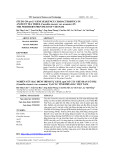
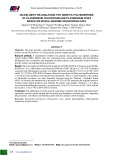


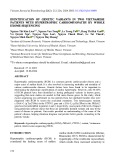

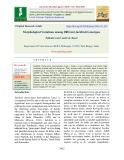

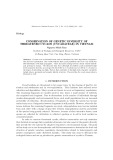
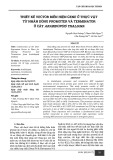



![Bài tập Đa dạng thế giới sống [kèm đáp án/ hướng dẫn giải]](https://cdn.tailieu.vn/images/document/thumbnail/2025/20251123/thaohoang9203@gmail.com/135x160/5861763951302.jpg)











